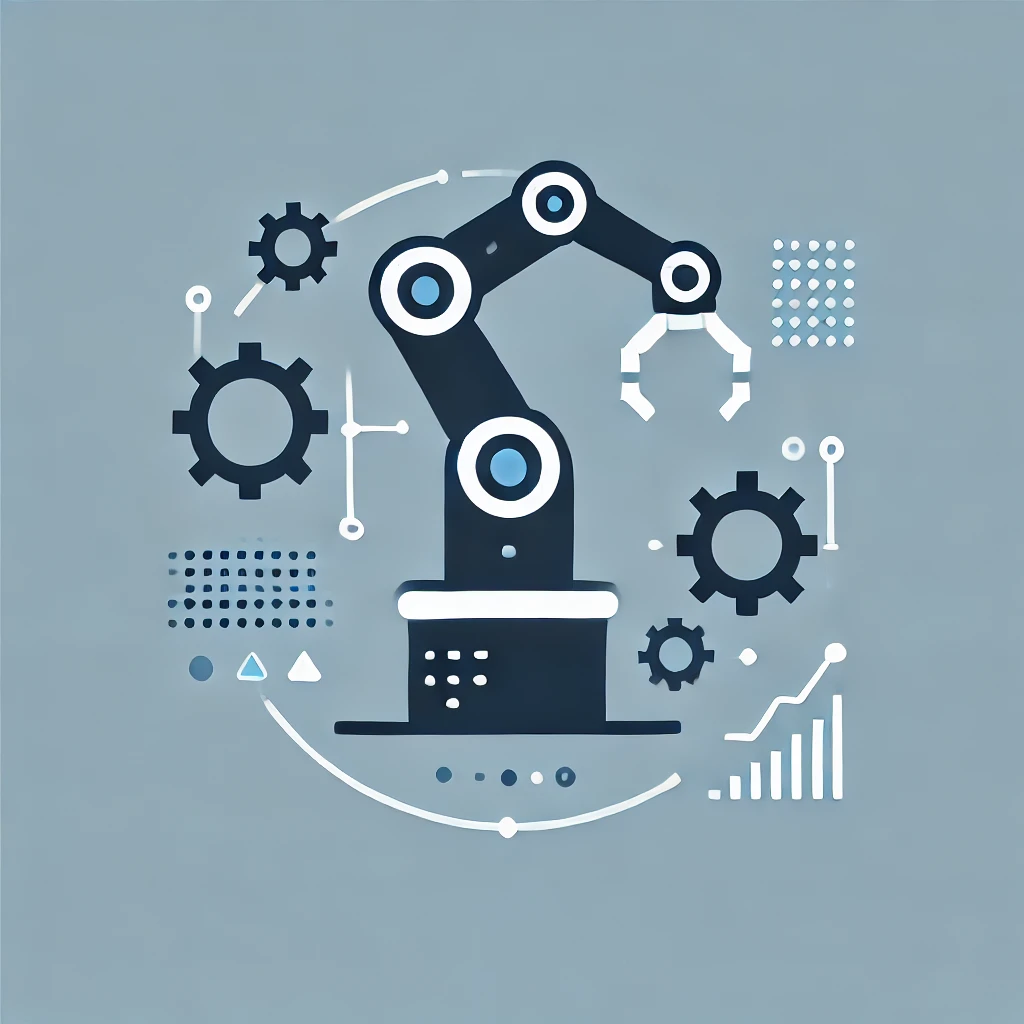The Rise of Robotic Process Automation (RPA)

The technological landscape is constantly evolving, and among its most transformative innovations is Robotic Process Automation (RPA). This powerful technology has become a cornerstone for organizations seeking to enhance efficiency, reduce costs, and stay competitive in a fast-paced digital world.
RPA involves the use of software robots, or “bots,” to automate repetitive, rule-based tasks that traditionally require human intervention. From processing invoices to managing data entry, RPA is revolutionizing industries by enabling faster and error-free operations.
What is Robotic Process Automation?
RPA is a form of business process automation that leverages software robots to mimic human interactions with digital systems. These bots can log into applications, move files, extract data, and perform other routine tasks without requiring constant supervision.
Unlike traditional automation, RPA does not require complex integrations or re-engineering of systems. It operates at the user interface level, making it a versatile solution that works seamlessly with existing applications.
Key Features of RPA
- Rule-Based Execution: Bots follow predefined rules to complete tasks without deviation, ensuring accuracy and consistency.
- Non-Invasive Technology: RPA integrates with existing systems without altering their underlying architecture.
- Scalability: RPA can scale up or down based on workload requirements, making it highly adaptable to business needs.
- 24/7 Operation: Bots work tirelessly, ensuring continuous productivity and faster turnaround times.
- Auditability: Every action performed by RPA is logged, providing detailed records for compliance and analysis.
The Growing Popularity of RPA
The adoption of RPA has surged in recent years, driven by the need for digital transformation and operational efficiency. Several factors contribute to its rising popularity:
1. Cost Efficiency
RPA significantly reduces operational costs by automating labor-intensive tasks. Organizations save money on staffing and error correction, achieving quick returns on investment.
2. Error Reduction
Human errors in repetitive tasks can lead to costly mistakes. RPA ensures accuracy by following predefined workflows, improving data quality and compliance.
3. Enhanced Productivity
By taking over mundane tasks, RPA frees employees to focus on more strategic and creative activities, boosting overall productivity and job satisfaction.
4. Improved Customer Experience
Faster processing times and fewer errors result in better service delivery, enhancing customer satisfaction and loyalty.
5. Flexibility Across Industries
RPA is industry-agnostic, making it a valuable tool for finance, healthcare, manufacturing, retail, and beyond.
Applications of RPA Across Industries
1. Banking and Finance
- Loan Processing: Automating the verification of loan applications and customer documents.
- Fraud Detection: Monitoring transactions to identify anomalies and potential fraud.
- Account Reconciliation: Streamlining the reconciliation of financial statements.
2. Healthcare
- Patient Records Management: Extracting and organizing data from patient records.
- Insurance Claims Processing: Speeding up claims management and approval workflows.
- Regulatory Compliance: Ensuring compliance with healthcare regulations through accurate documentation.
3. Retail
- Inventory Management: Automating stock updates and reordering processes.
- Order Processing: Streamlining order fulfillment and shipment tracking.
- Customer Support: Managing customer queries and returns efficiently.
4. Manufacturing
- Supply Chain Management: Automating procurement, inventory tracking, and vendor management.
- Quality Control: Recording and analyzing production data to identify defects.
- Maintenance Scheduling: Optimizing equipment maintenance schedules.
5. Human Resources
- Employee Onboarding: Automating background checks, contract generation, and induction processes.
- Payroll Management: Streamlining salary calculations and disbursements.
- Leave Management: Automating the approval and tracking of employee leave requests.
Challenges in RPA Implementation
While RPA offers significant benefits, its implementation is not without challenges. Organizations must address these hurdles to unlock its full potential.
1. Resistance to Change
Employees may fear that RPA will replace their jobs, leading to resistance. Transparent communication and upskilling initiatives are crucial to mitigate these concerns.
2. Process Selection
Not all processes are suitable for automation. Identifying the right tasks to automate requires careful analysis and planning.
3. Scalability Issues
Scaling RPA across multiple processes and departments can be complex, especially without a well-defined strategy.
4. Maintenance and Updates
Bots require regular updates to adapt to changing workflows, systems, and compliance requirements.
5. Security Concerns
RPA bots interact with sensitive data, making robust cybersecurity measures essential to prevent breaches and misuse.
The Future of RPA
RPA is continuously evolving, integrating with advanced technologies to expand its capabilities and redefine the automation landscape.
1. Intelligent Automation
The fusion of RPA with artificial intelligence (AI) and machine learning (ML) is enabling bots to handle complex tasks. This evolution, known as intelligent automation, allows bots to analyze data, make decisions, and learn from experience.
2. Hyperautomation
Hyperautomation involves using RPA in conjunction with other tools like AI, process mining, and advanced analytics to automate end-to-end workflows. It aims to achieve maximum efficiency and digital transformation.
3. Citizen Development
Low-code and no-code platforms are empowering non-technical users to create and deploy RPA bots, democratizing automation across organizations.
4. Enhanced Workforce Collaboration
The future of RPA lies in augmenting, not replacing, human capabilities. Bots will act as digital assistants, enabling employees to focus on higher-value tasks.
5. Industry-Specific Solutions
RPA vendors are increasingly offering tailored solutions for specific industries, ensuring faster adoption and better outcomes.
Case Studies: Successful RPA Implementation
Case Study 1: A Financial Services Company
A global financial firm used RPA to automate 60% of its back-office operations, including data entry, account updates, and transaction processing. This resulted in a 40% reduction in costs and improved customer satisfaction.
Case Study 2: A Healthcare Provider
A hospital implemented RPA to manage patient scheduling and billing. The automation reduced appointment scheduling errors by 90% and improved staff productivity.
Case Study 3: A Retail Giant
A leading retail chain used RPA to automate inventory updates and vendor communications. This streamlined supply chain operations and reduced delays in stock replenishment.
Conclusion
The rise of Robotic Process Automation marks a transformative era in how businesses operate. By automating repetitive tasks, RPA empowers organizations to enhance efficiency, reduce costs, and improve customer experiences. While challenges exist, the integration of AI, hyperautomation, and citizen development will continue to push the boundaries of what RPA can achieve.
As industries embrace digital transformation, RPA will remain at the forefront, shaping the future of work and enabling businesses to thrive in an increasingly competitive world. Organizations that invest in RPA today are not just automating processes; they are building a foundation for innovation, agility, and sustained growth.





